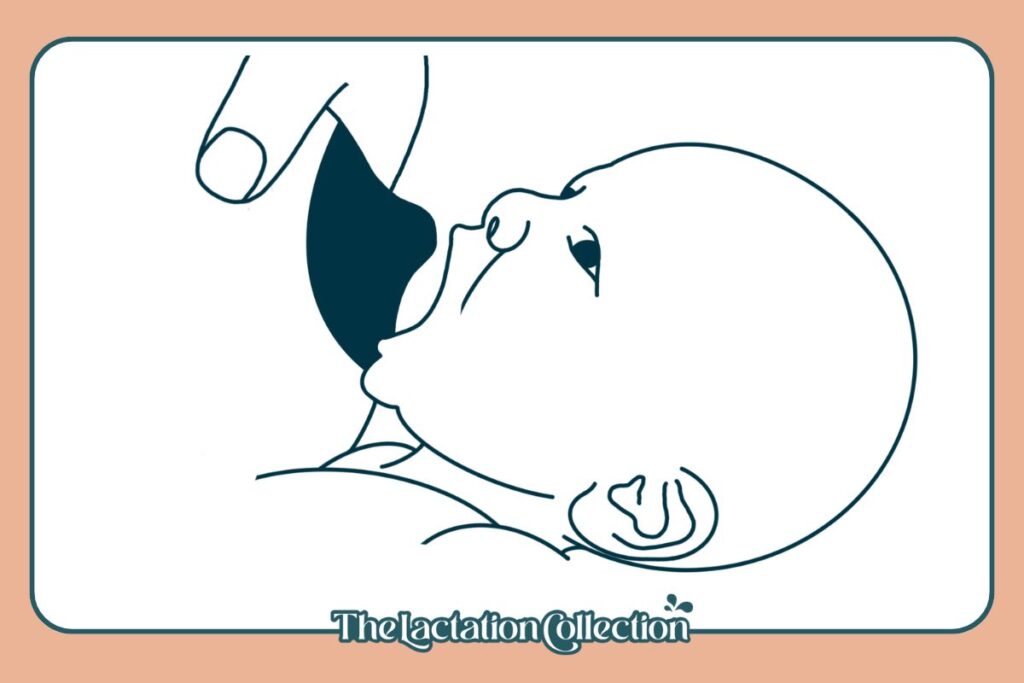A shallow latch is a common but oh-so-painful issue when breastfeeding. If your baby has a shallow latch, it can cause nipple pain and cause your baby not to get enough milk. The most common indicator will be the painful nipple, as it may take time to notice baby’s lack of milk intake.
- Wait for baby to open their mouth wide
- Break a shallow latch and try again
- Try a laid-back breastfeeding position
- Compress the breast to help baby latch
- Provide skin-to-skin contact
- Get help

No matter the cause, we’re here to help. Here are tips to help baby get a deeper latch
Wait for baby to open their mouth wide
Be patient and wait for baby to open their mouth wide. It is helpful to bring baby to the breast (chin touching the breast) and bring baby’s nose to your nipple; this gets them in the correct placement to open their mouth wide over the nipple before latching.
You can encourage baby to open their mouth by hand-expressing a bit of milk and touching it to baby’s lips.

Break the latch and try again (if the latch is shallow)
If you notice that the latch is shallow, place your finger in the corner of baby’s mouth to break the suction before taking the baby off the breast and trying again to get a deeper latch.
Possible signs of a shallow latch:
- Pain
- Cracked or bleeding nipples
- Clicking sound
- Pinched nipple after feeding
- Milk leaking from the mouth
- Milk Supply Decreasing

Is latch causing you pain or frustration?
*Do not provide personal information
*This information is for general informational purposes only and is not intended to diagnose or treat any condition, illness, or disease.

Positioning and Latch Checklist
If you like checklists, we have the perfect free resource for you. This checklist has easy-to-follow positioning and latching steps and highlights key techniques and signs of a good latch…Get the full list >>
Try a laid-back breastfeeding position
This position promotes the baby’s innate ability to breastfeed and helps baby get a deeper latch. This position is where baby rests against your chest, and gravity assists with the latch. Learn more about breastfeeding positions.

Compress the breast to help baby latch
When feeding in a cross-cradle position, use your hand in a U shape under the breast to compress the breast and make it easier for baby to latch.
You’ll want to be sure that you place baby’s chin angled upward toward the breast with baby’s upper lip beneath the nipple.
For more tips, read “Breastfeeding Latch: The First Fundamental of Breastfeeding.”

Provide skin-to-skin contact
Practicing regular skin-to-skin contact can help both you and baby relax, helping baby to latch on more deeply.

Get help from an IBCLC
If the shallow latch is persistent and breastfeeding continues to be painful, contact an IBCLC near you for help. Schedule a virtual consult with an IBCLC on our team, or search for an IBCLC near you through the U.S. Lactation Consultant Association Directory.
Breastfeeding is a learning experience for both you and your baby. Practice these principles and, as always, reach out (consult@thelactationcollection.com) if we can help in any way. You’ve got this, mama.










